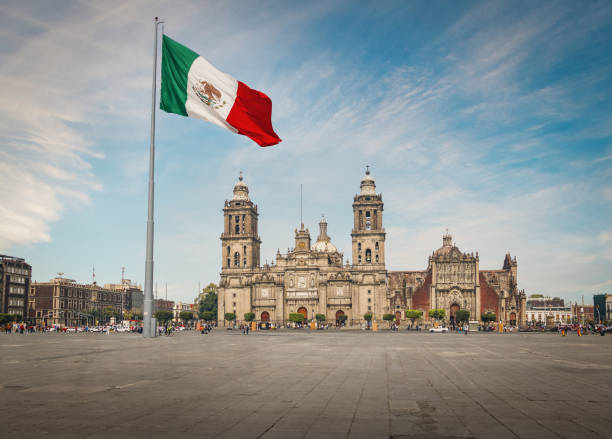Top 10 Gold-Producing Countries In The World 2025
By ICON TEAM | Published on Jun 13, 2025
List Of Top 10 Gold Producing Countries In The World 2025:
One of the most sought-after and scarce metals in the world, gold is still important to world economies because it is a safe-haven asset, a vital component of jewelry, and a necessary component of many different sectors. Gold production is still a major economic engine for many countries in 2025, and nations on several continents contribute to the world's supply. The United States, Ghana, Peru, Indonesia, Mexico, Uzbekistan, China, Russia, Australia, and Canada are the top 10 gold-producing nations in the world for 2025, according to the most recent data and predictions. This article gives a thorough picture of the global gold mining scene by examining the major mines, economic effects, difficulties, and gold production in each nation.
1. The United States:

With an estimated production of 170 metric tons (MT) in 2024, the United States is one of the top producers of gold in the world. This amount is predicted to stay the same or slightly rise in 2025. With around 72% of the nation's total gold production coming from the Nevada Gold Mines complex, which consists of six significant mines run by a joint venture between Barrick Gold and Newmont Corporation, the state of Nevada is the epicenter of American gold production. The Cortez and Turquoise Ridge mines, two of the biggest in the world, are important operations. Advanced mining technologies and a well-regulated industry benefit the United States, although production has been dropping recently as a result of falling ore grades and dwindling reserves. The United States is still a major contributor with an estimated 3,000 MT of gold reserves, but exploration spending is declining, which raises questions about sustainability over the long run. In mining locations like Nevada and Montana, gold mining supports infrastructure and jobs, contributing billions to the U.S. economy.
2. Ghana:

Ghana, historically known as the "Gold Coast," is Africa's greatest producer of gold and a major player on the world stage. In 2024, it produced about 130 MT of gold, with 2025 production predicted to be comparable or slightly higher. With 62.1% of all exports in 2023 and a substantial GDP contribution, gold is a vital component of Ghana's economy. This production is driven by major mines including Gold Fields' Tarkwa (551,000 ounces) and Newmont's Ahafo South (581,000 ounces in 2023). Favorable geology and reasonably priced mining activities have propelled Ghana's ascent to prominence, drawing big international corporations like AngloGold Ashanti. However, sustainability is at risk from issues like illicit mining and environmental degradation. Ghana's estimated 1,000 MT of gold reserves guarantee its continued significance, and the government's initiatives to control artisanal mining are meant to increase the industry's economic influence.
3. Peru:
With an output of about 100 MT in 2024, which is predicted to remain consistent in 2025, Peru continues to be the greatest producer of gold in Latin America. The largest mine in the nation and one of the most important in the area is Yanacocha, which is run by Compania de Minas Buenaventura and Newmont. Although the Andes account for the majority of Peru's gold production, illicit mining, especially in the Amazon, has destroyed the environment and increased mining-related deforestation by 400% in the last ten years. Although output has somewhat decreased recently due to government crackdowns on illegal operations in places like La Pampa, Peru is still a vital supplier because gold makes up a sizable amount of its export sector. With estimated reserves of 2,700 MT, Peru's gold industry must strike a balance between environmental preservation and financial gain.
4. Indonesia:

About 100 MT of gold were produced in Indonesia in 2024; this amount is expected to continue throughout 2025, mostly due to the Grasberg mine, which is the biggest gold mine in the world and is run by Indonesia Asahan Aluminium and Freeport-McMoRan. Grasberg, which lies in Papua, is a key component of Indonesia's mining industry, which is a major source of income, producing 1.98 million ounces (56.1 MT) in 2023. Nonetheless, the mine has a major negative influence on the environment, releasing 1,000 tons of mercury a year, endangering the health of nearby communities. Although Indonesia is a leading producer of gold due to its estimated 2,600 MT of reserves, exploration may be discouraged by strict government laws governing land use and foreign investment. The nation's gold output trajectory in 2025 will be shaped by its emphasis on developing mining infrastructure and resolving environmental issues.
5. Mexico:

Mexico produced 130 MT of gold in 2024, and estimates for 2025 indicate that production will either remain unchanged or slightly grow. Precious metals make up more than half of the nation's total metal production, and gold mining has a long history there. Fresnillo's Herradura mine, which produced 355,485 ounces in 2023, is a significant producer. Although community conflicts and water scarcity in mining regions pose issues, Mexico's good regulatory environment and comparatively inexpensive mining expenses make it an appealing destination for international enterprises. With an estimated 1,400 MT of deposits, Mexico is a vital contributor to the world's gold supply. Mineral exports generate billions of dollars a year, supporting economic growth, but future output may be impacted by diminishing ore grades and growing production costs.
6. Uzbekistan:
With an output of 120 MT in 2024 and predicted to continue to grow in 2025, Uzbekistan has become a major producer of gold. With an estimated 4,500 MT in reserves, the state-owned Navoi Mining and Metallurgical Company's Muruntau mine is the largest open-pit gold mine in the world by area. Muruntau, which was discovered in the 1950s, produces more than 2.5 million ounces a year and is expected to grow with improvements scheduled to be finished in 2026. Government investment has helped Uzbekistan's gold production increase consistently, although future development may be constrained by the lack of exploration in recent decades. Although gold is a significant export that supports the country's economy, depending too much on one big mine might be dangerous. In 2025, Uzbekistan's position will probably be maintained by its strategic focus on modernizing mining operations.
7. China:

With an estimated 380 MT of gold produced in 2024, China continues to lead the world in gold production, a number that is predicted to hold or even rise slightly in 2025. With the help of state-owned behemoths like Zijin Mining and Shandong Gold, which control important mines like Jiaojia and Zijinshan in Shandong province, the nation has held its top spot for more than ten years. With reserves of about 3,000 MT, China's gold output makes up about 10% of the world's total. Stricter environmental laws, especially those pertaining to the use of cyanide, have complicated production, nevertheless, and it has somewhat decreased from its peak of 455 MT in 2016. China, the world's biggest consumer of gold, increased its stockpiles by 44 MT in 2024, demonstrating the metal's importance for maintaining economic stability in the face of trade concerns worldwide.
8. Russia:

Russia is expected to continue to be the world's largest producer of gold in 2025, with a consistent output of 310 MT in 2024. The largest mine in the nation, Olimpiada, is run by Polyus Gold and produces substantial amounts in addition to other important operations like Kupol and Blagodatnoye. Russia's strong production is supported by its estimated 11,100 MT of gold reserves, which rank second in the world. Due to disruptions in gold shipments caused by sanctions resulting from the conflict between Russia and Ukraine, Russia is looking for new markets in Asia and the BRICS countries. Since two-thirds of domestic production is bought by the government, gold is essential to keeping the ruble stable. Russia's dedication to the industry is demonstrated by its goal of growing production by 4% yearly through 2026, despite geopolitical obstacles.
9. Australia:
Although weather-related disruptions have periodically affected output, Australia, which produced 290 MT of gold in 2024, is predicted to continue to be a major producer in 2025. Among the biggest gold mines in the world, Newmont's Super Pit (Fimiston Open Pit) near Kalgoorlie and Boddington makes a substantial contribution to Australia's economy as a leading export commodity. With 11,000 MT of the greatest gold reserves in the world, Australia enjoys the advantages of sophisticated mining infrastructure and a stable regulatory framework. High production costs and deteriorating ore grades, however, provide difficulties; in Q1 2024, a 4% production decline was recorded. Australia's gold sector generates billions of dollars in income and thousands of jobs, and further exploration activities are meant to maintain its position as a global leader.
10. Canada:

About 200 MT of gold were produced in Canada in 2024, while estimates for 2025 show a stable or marginally higher output. More than 70% of production occurs in Ontario and Quebec, and the sector is driven by important mines like Red Lake and Detour Lake. The mineral-rich Golden Triangle in British Columbia supports Canada's gold industry, which is expected to generate $22.34 billion in exports in 2022. Long-term potential is guaranteed by the nation's estimated 2,300 MT of reserves, but profitability is threatened by growing expenses and environmental restrictions. Canada's Q1 2024 production rise of 16% year over year demonstrates its expanding capacity and establishes it as a dependable worldwide supplier. The Canadian gold industry in 2025 will be shaped by investments in exploration and environmentally friendly mining techniques.
Comments 0